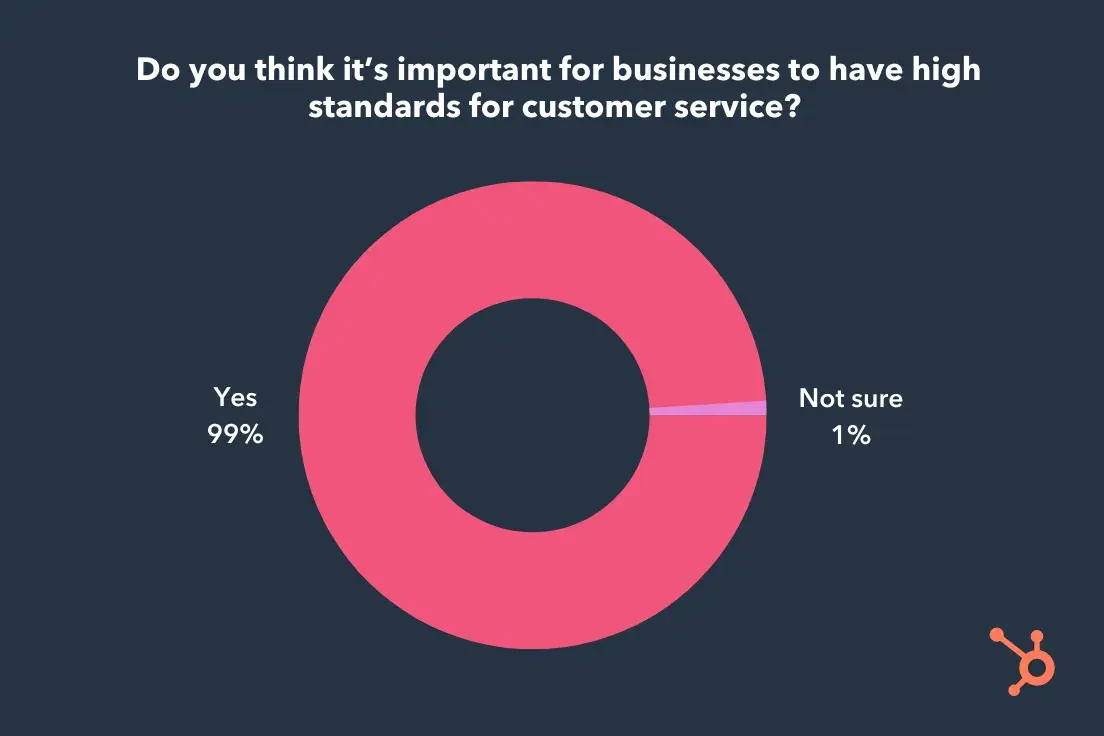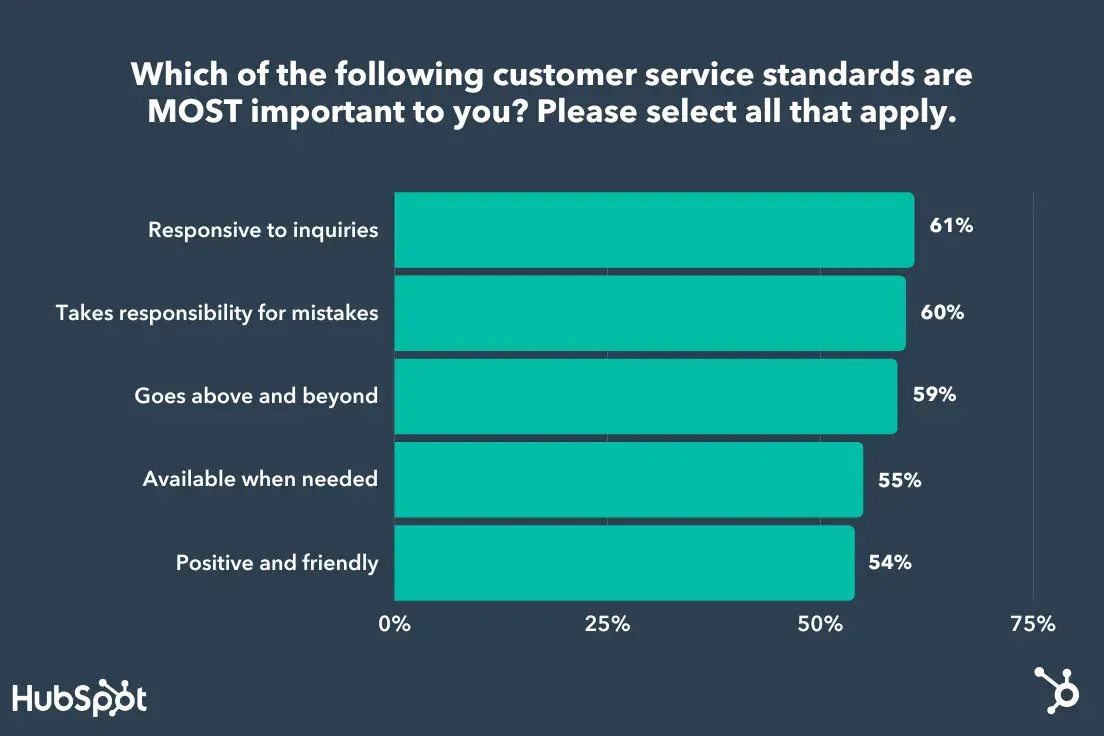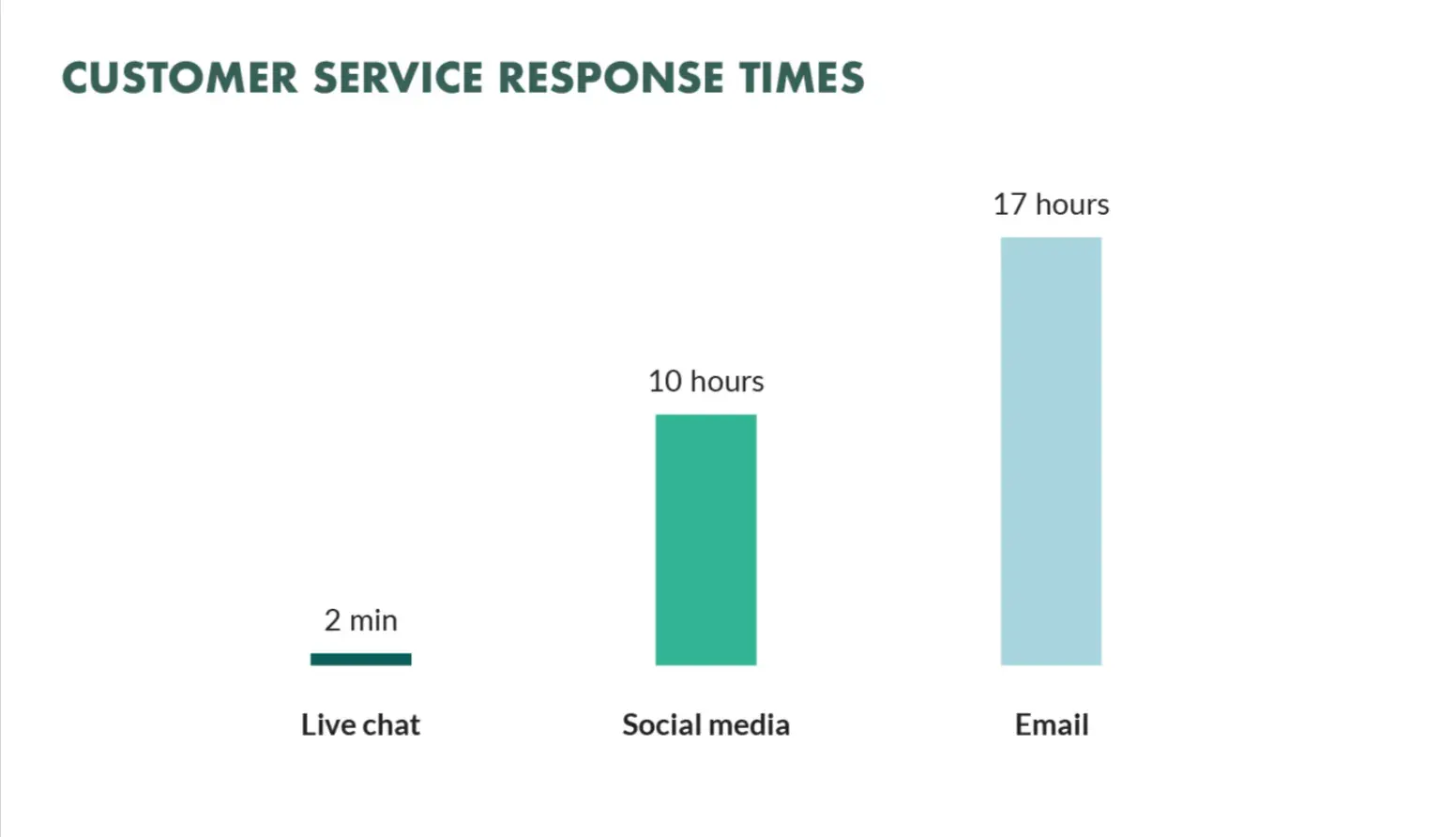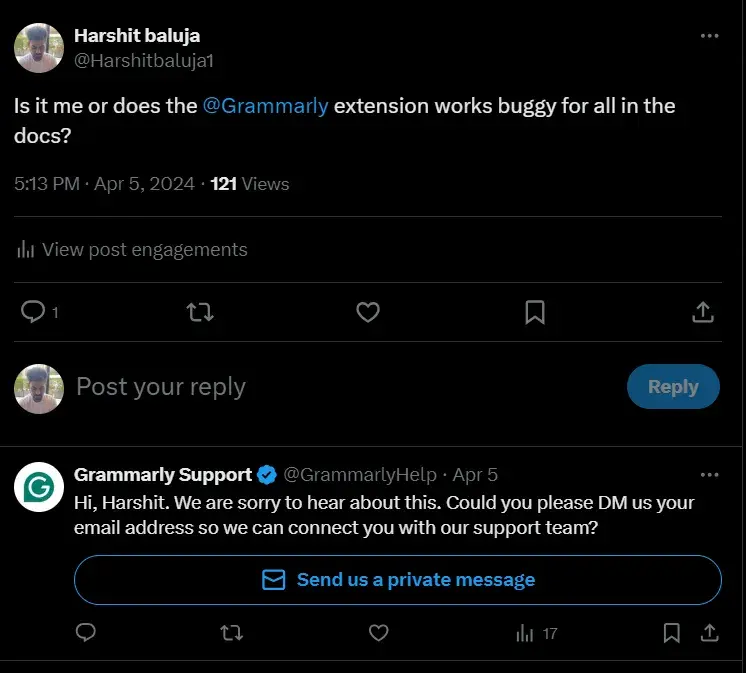Table of Contents
- Customer Service Standards
- Why are customer service standards important?
- 10 Common Customer Service Standards
- Top 5 Customer Service Standards, According to Consumers
- My Takeaway: Setting the Standard for Customer Service
Customer Service Standards
These standards represent a level of quality that your business follows to provide customer service. They are the guidelines that drive customer interactions. This includes everything from how you greet customers and handle customer complaints to what type of customer service training your employees receive.
Each company creates its own set of customer service standards, but the foundation is developed based on key principles of customer service — like speed, transparency, and empathy.
Let‘s talk about why it’s important for businesses to set customer service standards like these.
Why are customer service standards important?
Customer service standards give customers a clear idea of what to expect from your organization. They also give agents a set of guidelines to follow when interacting with customers. Setting standards around key principles of customer service, like responsiveness and accountability, show customers that their satisfaction is your main priority.
Most importantly, customer service standards really matter to consumers. I surveyed 100 consumers across the United States and asked them whether they think it's important for businesses to have high customer service standards.
The results are shown in the image below.

That's right, a whopping 99% of consumers answered a hard “yes” to that question. But let's go a step further and discuss some of the specific reasons why customer service standards are important in more detail.
They ensure your customers have a positive experience.
When you establish concrete standards of customer service, you're helping to ensure positive experiences for your customers.
As a customer, I always want my queries to be listened to and prioritized. For this, I prefer live chats over chatbots. In fact, 75% of customers prefer speaking to a live agent for resolution.
Hence, customers are more likely to have a positive experience when they have a short wait time and faster problem resolution by the live agent.
These customer service standards that you set as a business are what help keep customers happy (and less likely to churn) in difficult situations.
They differentiate you from the competition.
Customer service standards can also help you set your business apart from the competition.
Take this example — a few days back, I had to choose between two website builders for my new project. I enquired about the pricing and features on the same day.
- Company A had more responsive & friendly reps, and they solved my queries within a few minutes through several modes of communication.
- Company B’s support team, however, reached out to me through email after three days. Furthermore, the email response seemed automated and could annoy a customer with urgency.
So, who do you think I chose to move forward within this scenario?
They give you measurable milestones toward customer satisfaction.
Another reason why customer service standards are important is because they help you evaluate your business’s progress toward important customer service goals like satisfaction and delight.
From an internal perspective, you can quantify your standards to set goals for your agents. These goals can then serve as the basis for performance reviews.
You can also survey your customers to see how well your business is meeting their expectations, and you can use that information to get better.
10 Common Customer Service Standards
During my research, I discovered the most common service standards, as set by the top organizations:
- Be responsive to customer inquiries and act with a sense of urgency.
- Be transparent about your policies and procedures and consistent in the way you implement them.
- Take responsibility for your mistakes, and hold your team accountable.
- Show empathy for each customer's situation and personalize the experience to their specific needs.
- Go above and beyond to solve the customer's problem, and always strive for customer delight.
- Be available when customers need you, and clearly communicate when and how customers can reach you.
- Stay positive and friendly during customer conversations, no matter how difficult the interaction may seem.
- Be reachable on multiple channels, especially the channels your customers value the most.
- Empower customers to find answers on their own through self-service options like FAQs and knowledge bases.
- Use automated technology efficiently, and properly train your reps on how to use it.
With a dedicated customer service tool, like HubSpot’s Service Hub, you can help your team live up to these standards. Now that we‘ve highlighted 10 industry customer service standards, let’s take a look at the top five customer service standards that consumers value the most.
Top 5 Customer Service Standards, According to Consumers
Using the 10 common customer service standards as a baseline, I used the same survey mentioned above to see which standards are most important to consumers across the U.S.

As shown in the image above, here are the top five customer service standards ranked in order of importance.
1. Be responsive to customer inquiries.
I guess it isn’t surprising that this is rated as the top customer service standard. I am a short-tempered customer and expect a quick response from my service provider. In fact, 90% of customers rate an “immediate” response as important or very important when they have a customer service question.
Being responsive means more than just responding to every customer inquiry. While this is certainly important, speed and efficiency matters. The wait times may differ depending on the communication channels.
One study shows that the average response time to respond to service requests is 12 hours (which is quite long for me!). However, different communication channels like social media and live chat have shortened the time to respond, increasing the customer satisfaction.

Grammarly stands out for its faster responses to customer inquiries through in-app chat support and a dedicated X support team. Their exceptional support team responded within a few hours of customer inquiry.

Pro tip: Most consumers expect a response from customer service in 5 minutes or less. Make sure you have a good first-touch customer response strategy in place — whether it‘s through automation or live agent — to let your customers know that you received their inquiry, and you’re working on it.
2. Take responsibility for your mistakes.
During my stint in a customer call center, I remember my bosses telling us, “Customers are not always right, but they are never wrong.”
Accountability stands as the second most important customer service standard, with 60% of consumers ranking this as an important standard.
Accountability starts by listening to the customers and accepting responsibility for resolving their issues. Taking up the responsibility shows the customer that you care more about the resolution than getting caught up in assigning blame.
Slack is a great example of how brands should accept accountability for customer issues. Here, the brand uses power words like “Sorry” to apologize and look further into the issue.

The agents should be trained well to assess customer problems and offer solutions without waiting for their manager’s approval. Always be ready to offer compensation in the form of gift cards, loyalty programs, or whatever won’t break your bank.
For example, various Chipotle customers across the U.S. fell ill from food poisoning, leading their sales to see a massive hit. Chipotle’s founder, Steve Ells, held himself accountable by posting a page-long apology in 61 newspapers across the country:
[Embed tweet: <blockquote class=“twitter-tweet”><p lang=“en” dir=“ltr”>Apology letter from <a href=“https://twitter.com/Chipotle?ref_src=twsrc%5Etfw”>@chipotle</a> in the <a href=“https://twitter.com/WSJ?ref_src=twsrc%5Etfw”>@WSJ</a> - at a cost of ~$45K that's about 5,625 e-coli-free burritos (no guac). <a href=“https://t.co/sGaYjioJ4X”>pic.twitter.com/sGaYjioJ4X</a></p>— Bastiaan Janmaat (@bastiaanjanmaat) <a href=“https://twitter.com/bastiaanjanmaat/status/677145358888132608?ref_src=twsrc%5Etfw”>December 16, 2015</a></blockquote> <script async src=“https://platform.twitter.com/widgets.js” charset=“utf-8”></script>]
Pro tip: Mistakes happen, so consider developing a set of canned responses your reps can use when things don't go as planned. Something as simple as “We recognize that we made a mistake, and we want to make it right” can go a long way.
3. Go above and beyond to solve the customer's problem.
Here’s the word: Empathy.
Customers like it when the agents understand their issues and are willing to go the extra mile to solve their problems. It’s the simple acts that say, “We can hear you.”
According to Salesforce, 68% of consumers expect brands to be empathetic. Remember, being empathetic doesn’t mean nodding your head to their complaints. It’s just an expression of saying that you understand their issue and are willing to solve it.

I like Microsoft's response above because it is kind and understanding while redirecting the customer to a better means of communication.
Pro tip: The only thing better than meeting customer expectations is exceeding them. Each customer is different, so give your support reps the flexibility to determine what this means for each customer interaction.
4. Be available when customers need you.
Fourth up, with 55% of consumers in agreement, is simply being there when customers need your help.
A frustrated customer is like a nail hanging on the coffin. Customers don’t like to wait long on calls and may vent their frustration on social media or by submitting reviews. That’s why I would recommend that your brand be available around the clock.
24/7 customer support sends a clear message that they hear the customers efficiently and swiftly. Research suggests that companies that offer 24/7 customer service have an average occupancy rate of 98%.
Customers must know what your hours of operation are and when your customer service team is online. And it's even more important to be as responsive as possible during that window of time.
Zappos is a prime example of a brand that considers customer service as an important part of customer satisfaction. Despite being an ecommerce brand, they boast 24/7 customer support followed by personalization and a 365-day window to return items.
Pro tip: Use automation to ensure you're giving your customers a response even if your reps are offline. Automated email replies, chat responses, and phone messages are a great way to remind people when they can expect to hear back from you.
5. Stay positive and friendly during customer interactions.
And last but not least, 54% of consumers expect to have positive customer service interactions with friendly agents.
Kindness wins every time. And no matter how difficult the conversation may seem, I suggest you try not to take it too personally if a customer is upset. Because behind the frustration, it's usually just a customer who is just trying to find success with your product or service.
Pro tip: Keep this in mind during your customer service hiring process. Do some role play during your interviews to try and dissect how prospective agents tackle tough customer conversations.
My Takeaway: Setting the Standard for Customer Service
Setting up customer expectations is a step towards achieving higher customer standards.
The baseline that customer service standards create helps guarantee that all customers receive the same level of quality service — no matter who they speak to or where they are in the world. At the same time, I would suggest you weigh every customer service standard equally.
You can be quick in response, but what if you lack empathy? Customer reps should brainstorm to create common goals, measurable KPIs, and develop plans to improve customer service.
By setting standards for exceptional service, you can ensure that your company stays at the top of your target consumers’ minds.
Editor's note: This article was originally published in August 2022 and has since been updated for comprehensiveness.
Customer Service Skills


.webp)









